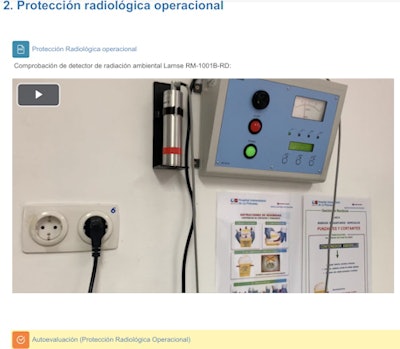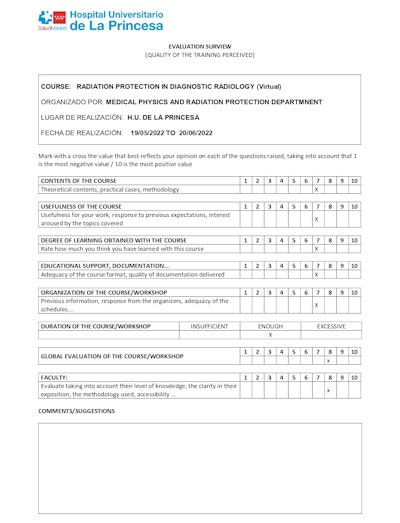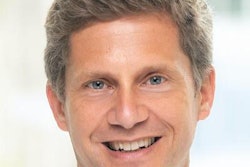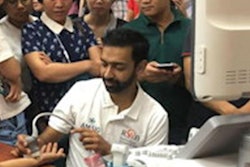
Fully online courses are proving to be a real game changer in radiation protection because they give maximum flexibility to attendees and allow more content to be covered, both theoretical and practical, Spanish educators have reported.
"More professionals can follow the course at the same time. Furthermore, it has the advantage that they can complete it at their own pace," explained Rodrigo Rosado del Castillo, Paula Garcia Castañon and colleagues from the Medical Physics and Radiation Protection Department at University Hospital La Princesa in Madrid, adding that the accreditation of their nuclear medicine course is perceived as an important extra benefit.
Legal requirements
Spanish law states that professionals who work in a radioactive facility must be taught compulsory education in radiation protection every two years, and since 2019, this education has had to be accredited by an official body.
"In the healthcare field, there are a few departments such as radiation oncology, hematology, and nuclear medicine that are also a radioactive facility. Nuclear medicine workers are the most exposed of those units, so this education is essential," the authors noted in an e-poster presentation at EuroSafe 2023.
In medical physics and radiation protection departments, training was done in person-to-person sessions, but the lessons went online during the pandemic. La Princesa has a "virtual knowledge platform," which is a web page that provides targeted continuous education, and staff have free access to this platform. A key software tool is version 3.4 of Moodle (modular object-oriented distance learning environment).
The 16-hour course is accredited by the regional health council, and it has been developed with partial funding from the Spanish Nuclear Safety Council (CSN). It consists of 11 modules: basic concepts of nuclear medicine, operational radiation protection, radioactive bulks, radioactive waste management, radioactive contamination, radiation protection of the patient, therapeutic procedures, diagnostic procedures, performance rules of the facility, emergency plan of the facility, and incidents/practical examples.
Each module has a written element, and some of them have extra audiovisual contents that highlight specific aspects.
 Screenshot of one of the lessons of the course. At the top of the image there is a link that opens the principal text of the topic. In the middle there is audiovisual content, and at the bottom is a self-evaluation question. Figures courtesy of Rodrigo Rosado del Castillo, Paula Garcia Castañon, et al and presented at EuroSafe 2023.
Screenshot of one of the lessons of the course. At the top of the image there is a link that opens the principal text of the topic. In the middle there is audiovisual content, and at the bottom is a self-evaluation question. Figures courtesy of Rodrigo Rosado del Castillo, Paula Garcia Castañon, et al and presented at EuroSafe 2023.The course covers both therapy and nuclear medicine diagnosis, and it presents practical situations about radiation protection that participants must solve and/or explain, the authors wrote.
"Every module has a self-evaluation 'true or false' question. Professionals can complete the assigned tasks of the course at their own pace," they pointed out. "A mandatory final test assesses the level of knowledge of the trainee. This test consists of 20 multiple choice questions picked randomly. The exam must be completed in one uninterrupted hour, and 5 out of 10 points are needed to pass the course and obtain accreditation."
A satisfaction questionnaire is also presented at the end of the course, and a complementary module is added in the end, containing a bibliography.
 Satisfaction survey used to analyze the level of fulfillment of the participants with the course. There is also a section of suggestions where attendees can make comments about any topics or items that may be added or improved upon for further courses.
Satisfaction survey used to analyze the level of fulfillment of the participants with the course. There is also a section of suggestions where attendees can make comments about any topics or items that may be added or improved upon for further courses.At La Princesa, a total of 21 out of 22 staff have taken the course, representing an attendance level that rose by 30% compared with the person-to-person training. All participants passed the final exam, with an average mark of 8.95 out of 10, and according to the satisfaction survey, the general average satisfaction with the course was 9.2 out of 10.
Before the pandemic, lessons were limited to between one and two hours biennially because professionals could not abandon their duties, according to the authors. "Now, the course is quite complete, covering almost every aspect of radiation protection applied to our nuclear medicine department," they wrote, adding that this material is easily exportable, and it may be useful for other departments to implement similar online training program.
Training for radiology staff
A second EuroSafe 2023 e-poster by the same research group focused on continuous online education and training in radiation protection for radiology professionals. 283 professionals were invited from five centers; 87 participated in the course, and 83 passed the final test (95.4%) and obtained a diploma. Mean qualification was 8.89 out of 10, with a maximum of 10 and a minimum of 3.5.
Overall satisfaction with the course was 8/10, and participants appreciated the practical examples.
"A 15% higher attendance rate was reached with this online format when compared to traditional courses," said Garcia Castañon. "We plan to repeat the course every year or at least biennially, because over 200 professionals use ionizing radiation for diagnostic and interventional purposes, and a lot of them could not attend this edition."
It has proved feasible to deliver high-quality training using this format, and any future healthcare course related to radiation protection -- or at least part of it -- can be performed virtually, the authors concluded.
To view the entire poster about virtual training in nuclear medicine, go to the EPOS section of the ESR website. The co-authors of the e-poster were Guillermo Paradela Díaz, Sergio Honorato Hernandez, Pablo Chamorro, and Carlos Prieto Martin.




















